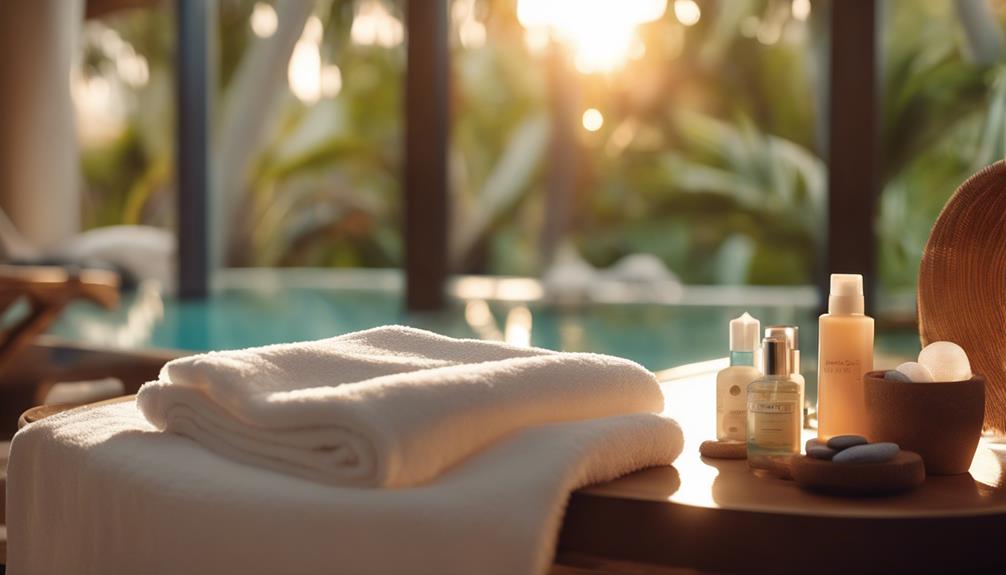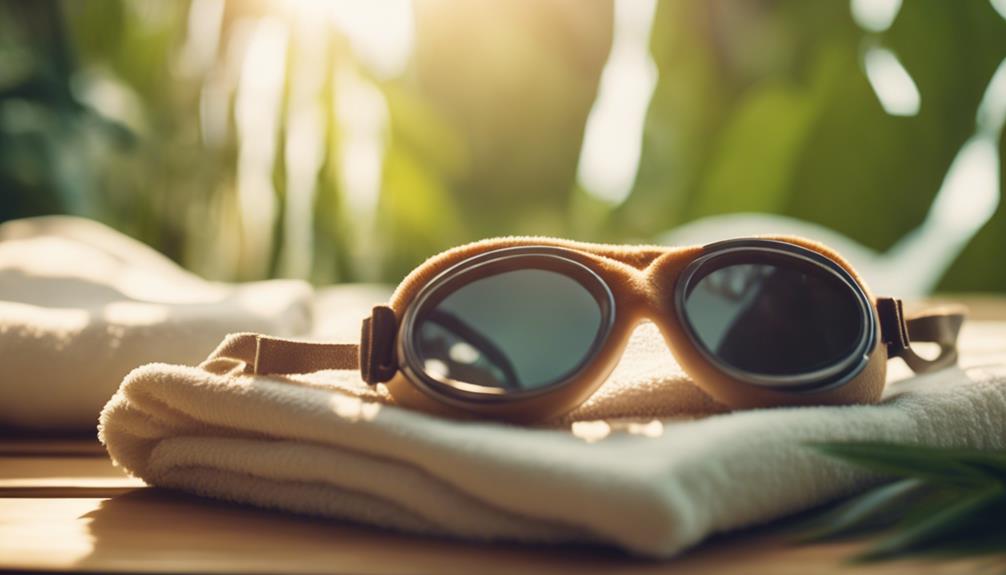To ensure success with your tanning bed sessions, it is important to first determine your skin type in order to prevent burns. Prior to your session, make sure to remove makeup and jewelry to allow your skin to breathe. Additionally, exfoliate and shave the day before your appointment to create a smooth canvas, followed by applying a non-oil-based moisturizer to keep your skin hydrated. Always remember to wear protective goggles and limit your tanning sessions to 2-3 times a week. When selecting bronzing products, choose ones that match your skin tone and conduct a patch test on a small area first. After tanning, maintain your glow with a hydrating moisturizer and avoid intense workouts for 24 hours. Explore more tips to enhance your tanning experience!
Key Takeaways
- Determine your skin type and history to tailor tanning sessions and avoid burns, especially for fair skin.
- Exfoliate and moisturize your skin a day prior to ensure smooth application and enhance tan longevity.
- Choose the right tanning product that matches your skin tone and is suitable for your skin type.
- Use protective eyewear during every session to shield your eyes from harmful UV rays.
Understanding Skin Preparation
Before stepping into the tanning bed, you need to properly prepare your skin to guarantee an even and effective tan.
Start by understanding your skin type; if you have fair skin, be cautious, as it burns easily.
Remove all makeup and jewelry to let your skin breathe.
Exfoliate and shave the day before your session for a smooth surface.
Apply a non-oil-based moisturizer to hydrate your skin before tanning.
Also, check any medications that might increase sensitivity to UV rays.
Finally, hydrate thoroughly to maintain skin elasticity and prevent dryness.
For best results, use a tanning lotion right before entering the tanning bed, ensuring you're ready for that sun-kissed glow.
Choosing Tanning Products
Selecting the right tanning products can greatly enhance your results and complement your skin's natural tone. Start by choosing a bronzer that matches your skin tone for a sun-kissed look without overpowering your complexion. Consider buildable options to adjust intensity based on your preferences.
Here's a quick reference table to help you decide:
| Product Type | Best For |
|---|---|
| Matte Bronzer | Oily skin |
| Shimmering Bronzer | Dry skin |
| Sunless Tanning Lotion | A more gradual and even tan |
Don't forget to test any product on a small skin area first. By choosing wisely, you'll achieve a beautiful, radiant glow with minimal effort!
Safety Precautions
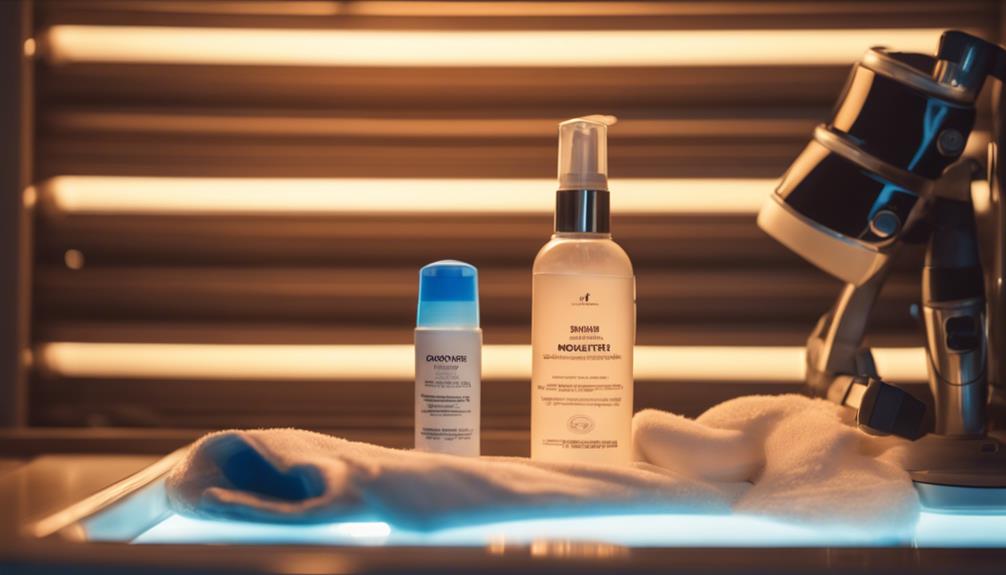
Taking the right safety precautions is essential to enjoying your tanning bed experience while minimizing risks to your skin and health.
Always consult with tanning professionals to tailor your sessions for maximum safety.
Use protective goggles that offer 100% UVA/UVB protection to shield your eyes from harmful rays.
If you have fair skin or a history of burning, seek medical advice before tanning.
Limit your sessions to 2-3 times a week and pay attention to how your skin reacts, adjusting frequency as necessary.
Don't forget to apply SPF lip balm to protect your lips during your session.
Following these guidelines will help guarantee a safer, more enjoyable tanning experience while safeguarding your skin's health.
Tanning Bed Maintenance
Maintaining your tanning bed is essential for preventing skin infections and ensuring a hygienic tanning experience. You need to establish a regular cleaning routine that targets high-contact areas.
Here are three key maintenance tips:
- Use EPA-approved disinfectants: After each session, wipe down the bed with a disinfectant to kill germs and bacteria.
- Focus on facial cushions and body contact areas: These spots are most prone to residue buildup, so give them extra attention during your cleaning.
- Schedule deep cleaning weekly: Set aside time for a thorough cleaning of the entire bed to maintain peak hygiene.
Session Management
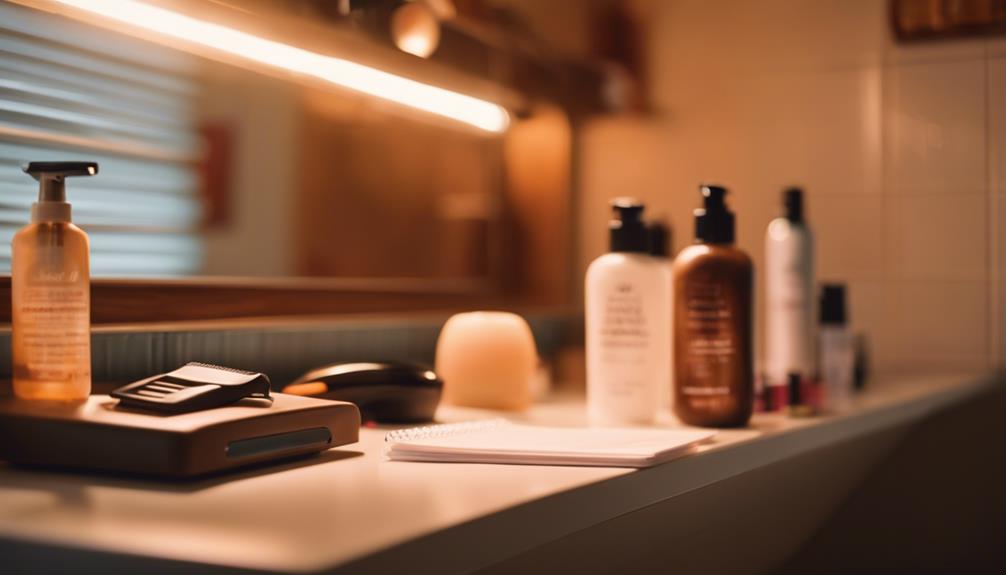
Customize your tanning bed sessions to suit your skin type and maximize results while minimizing risks.
Start by following the manufacturer's guidelines for ideal exposure time, adjusting based on your skin's response. If you have fair skin, limit sessions to 5-10 minutes, while darker skin can handle longer durations.
Always wear protective eyewear to shield your eyes from UV rays. Pay close attention to how your skin reacts during each session; redness or irritation signals it's time to reduce exposure or frequency.
Aim for 2-3 sessions per week, allowing your skin time to recover between visits. Keeping track of your sessions will help you find the perfect balance, leading to a healthy, sun-kissed glow without overexposure.
Hydration and Skin Care
Staying properly hydrated and caring for your skin before and after tanning sessions can greatly enhance your tanning results and overall skin health.
Proper hydration helps maintain your skin's elasticity and prevents dryness, leading to a more even tan.
Here are three essential tips to guarantee your skin is ready for tanning:
- Drink Up: Aim for at least 8 glasses of water daily to keep your skin plump and hydrated.
- Moisturize: Apply a non-oil based moisturizer before your tanning session to create a smooth canvas for tanning.
- Exfoliate: Gently exfoliate your skin the day before to remove dead skin cells, promoting an even tan.
Post-Tanning Care
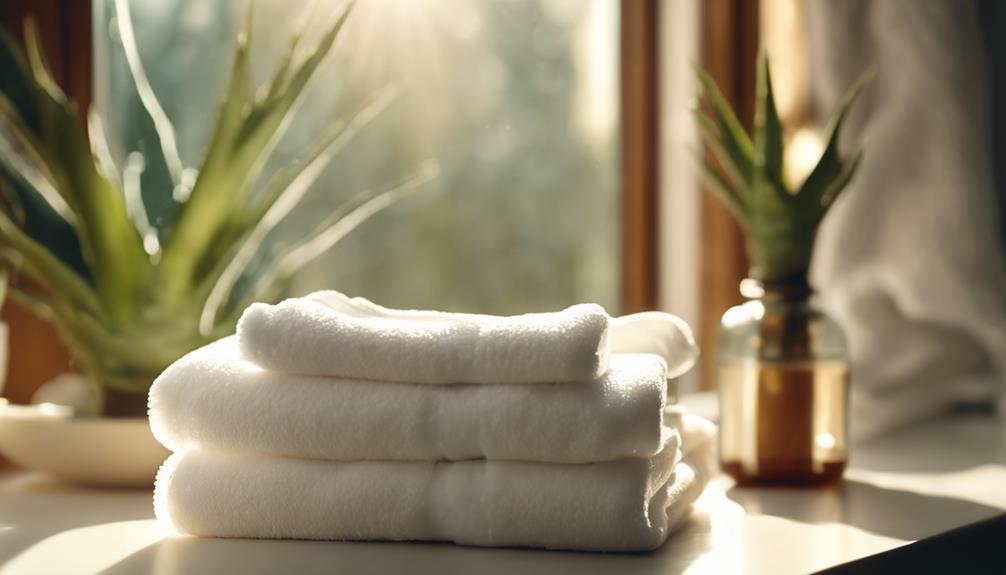
After tanning, it's important to care for your skin to prolong your tan and keep it healthy.
Start by showering with lukewarm water to remove any tanning products without stripping moisture. Avoid hot water and harsh soaps, as they can dry your skin. Pat your skin dry gently—don't rub.
Next, apply a hydrating moisturizer or after-tan lotion to lock in moisture and enhance your glow. Look for products with aloe vera or vitamin E for added nourishment.
Stay hydrated by drinking plenty of water, which aids in skin elasticity.
Also, avoid intense workouts and sun exposure for at least 24 hours to prevent fading.
With these steps, you'll maintain that sun-kissed look longer and keep your skin feeling great!
What Are Some Essential Prep Tips for Using Tanning Beds?
When it comes to using tanning beds, following pristine tanning bed tips is crucial. Start by exfoliating your skin to ensure an even tan. Use the right lotion and protective eyewear to prevent damage. Gradually increase your tanning session time to avoid burns. Always follow manufacturer guidelines for safe use.
Conclusion
In your quest for that golden glow, remember that preparation is your best friend.
Like a painter before a masterpiece, you need a clean canvas to achieve stunning results. By understanding your skin, choosing the right products, and prioritizing safety, you're setting yourself up for success.
Hydration and post-tanning care are the final brush strokes, ensuring your radiant look lasts.
Embrace these tips, and you'll shine bright, basking in the beauty of your well-earned tan!

